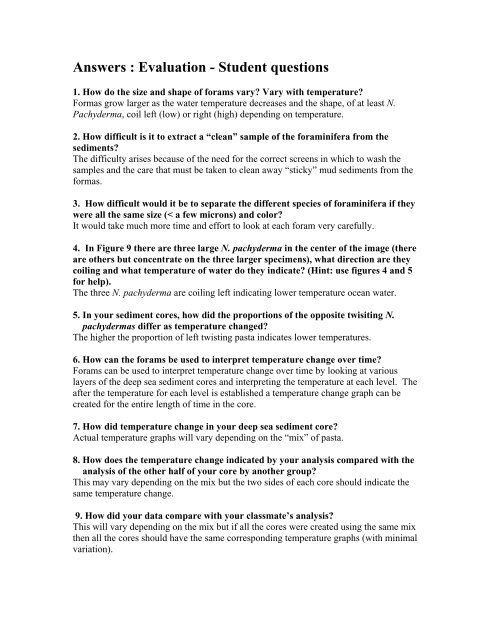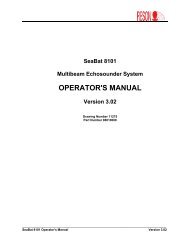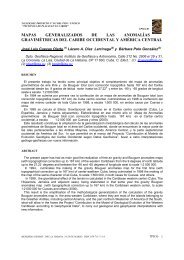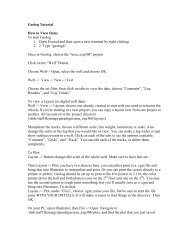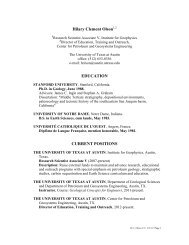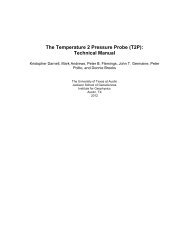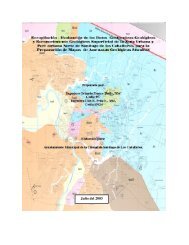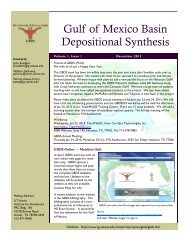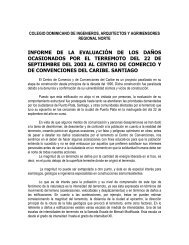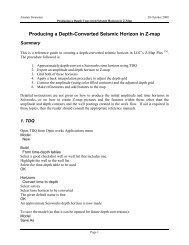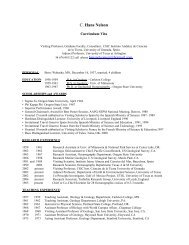Answers : Evaluation - Student questions
Answers : Evaluation - Student questions
Answers : Evaluation - Student questions
You also want an ePaper? Increase the reach of your titles
YUMPU automatically turns print PDFs into web optimized ePapers that Google loves.
<strong>Answers</strong> : <strong>Evaluation</strong> - <strong>Student</strong> <strong>questions</strong>1. How do the size and shape of forams vary? Vary with temperature?Formas grow larger as the water temperature decreases and the shape, of at least N.Pachyderma, coil left (low) or right (high) depending on temperature.2. How difficult is it to extract a “clean” sample of the foraminifera from thesediments?The difficulty arises because of the need for the correct screens in which to wash thesamples and the care that must be taken to clean away “sticky” mud sediments from theformas.3. How difficult would it be to separate the different species of foraminifera if theywere all the same size (< a few microns) and color?It would take much more time and effort to look at each foram very carefully.4. In Figure 9 there are three large N. pachyderma in the center of the image (thereare others but concentrate on the three larger specimens), what direction are theycoiling and what temperature of water do they indicate? (Hint: use figures 4 and 5for help).The three N. pachyderma are coiling left indicating lower temperature ocean water.5. In your sediment cores, how did the proportions of the opposite twisiting N.pachydermas differ as temperature changed?The higher the proportion of left twisting pasta indicates lower temperatures.6. How can the forams be used to interpret temperature change over time?Forams can be used to interpret temperature change over time by looking at variouslayers of the deep sea sediment cores and interpreting the temperature at each level. Theafter the temperature for each level is established a temperature change graph can becreated for the entire length of time in the core.7. How did temperature change in your deep sea sediment core?Actual temperature graphs will vary depending on the “mix” of pasta.8. How does the temperature change indicated by your analysis compared with theanalysis of the other half of your core by another group?This may vary depending on the mix but the two sides of each core should indicate thesame temperature change.9. How did your data compare with your classmate’s analysis?This will vary depending on the mix but if all the cores were created using the same mixthen all the cores should have the same corresponding temperature graphs (with minimalvariation).
10. How can all the class results be combined to create a larger data set?The larger the data set the closer the rest among the cores will be. One core does not areliable data set make, which is why scientists drill thousands of cores to establish a morereliable record.11. What can be done to improve this study?More cores sample can be “drilled” and analyzed from a large geographic distributionover a longer period of time. Also, more cores should be analyzed for each time periodto establish a more reliable record.


